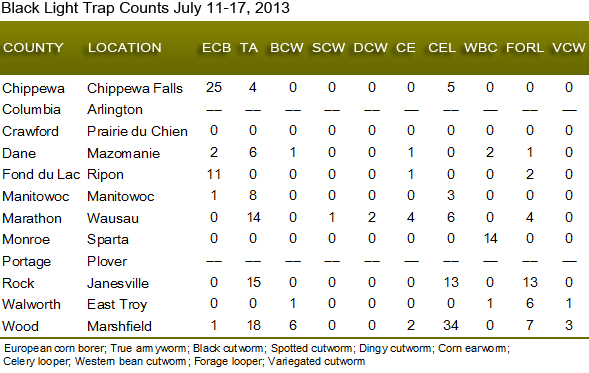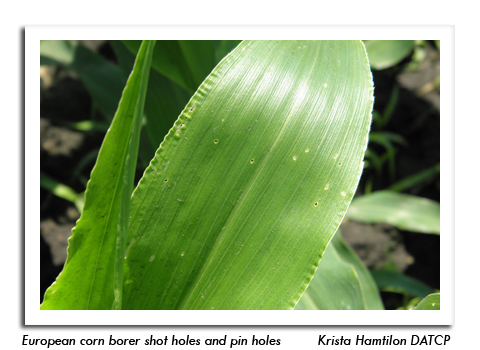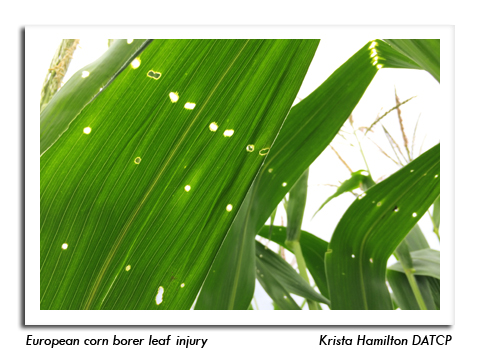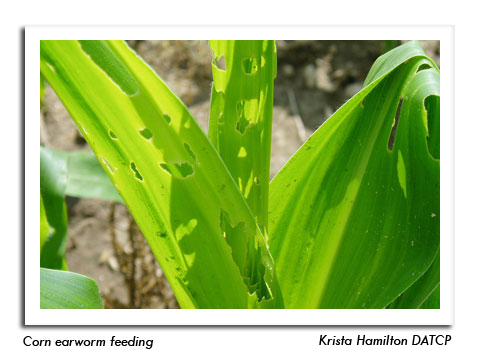
 |
|
|
Corn
Volume 58 Number 11 Date 07/18/2013 STALK BORER - Damage to corn has become more pronounced as larvae approach maturity. Examination of V5-V11 cornfields found infestation rates of 2-10%, with the highest population noted near Sparta in Monroe County. Spot treatment is no longer effective for many southern fields since the larvae have bored into the stalks and unemerged tassels. Controls must be applied from 1,400-1,700 degree days (base 41°F), or prior to the V7 stage. Stalk borer feeding is unlikely to kill corn plants beyond V7. WESTERN BEAN CUTWORM - Moth emergence continued at very low levels in the last week. The Wisconsin network of 103 pheromone traps registered a cumulative total of only 26 moths as of July 17, which compares to 2,574 moths at the same time last year when the flight was 50-75% complete statewide. According to the degree day model for this insect, about 10-25% of the population theoretically has emerged across southern Wisconsin. EUROPEAN CORN BORER - Larval infestation rates remain about the same as reported in previous weeks, with the typical population affecting fewer than 15% of the plants and occasional fields showing 20-30% whorl feeding. Larvae ranged in development from second- to fifth-instar in the areas surveyed this week. The most prevalent stage was the third instar. CORN EARWORM - Corn producers should continue to check fields regularly for this pest. Light to moderate damage was observed on 6-18% of the plants in a few fields in Dane and Green counties from July 11-17. -- Krista Hamilton, DATCP Entomologist 

.jpg)



|
|
|